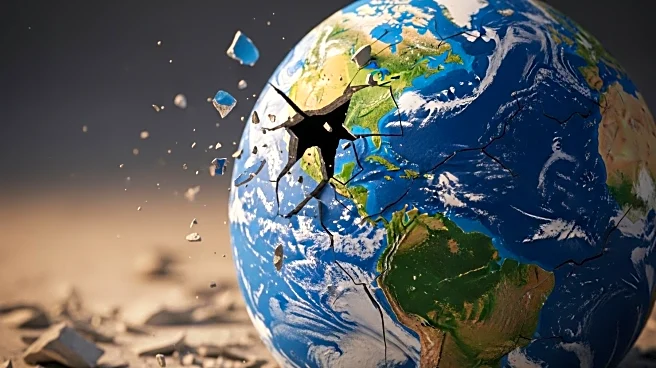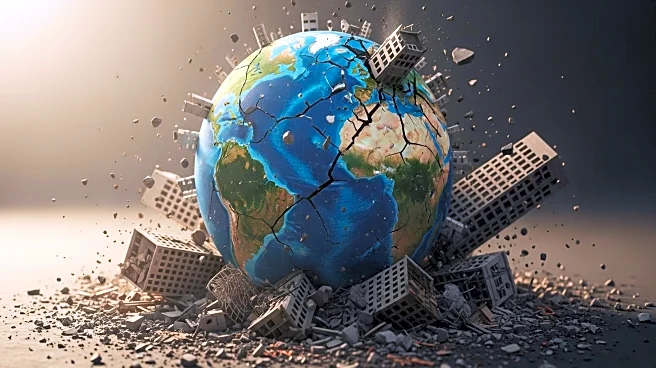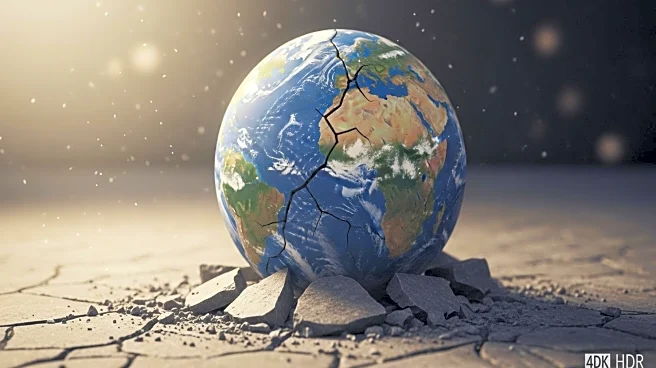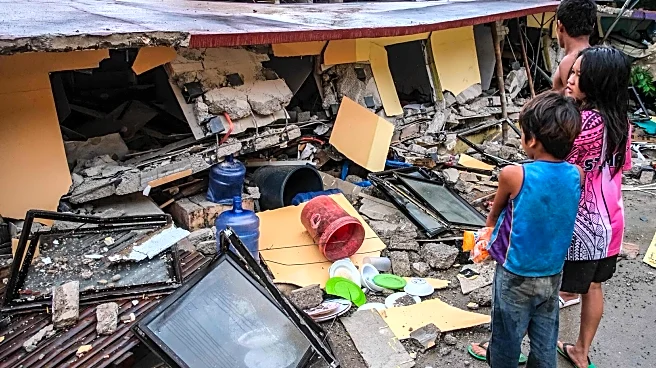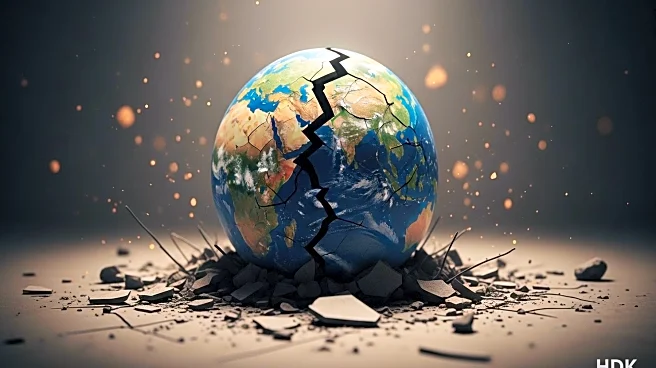What's Happening?
A 6.9-magnitude earthquake struck the central Philippines, resulting in at least 69 fatalities. The earthquake occurred off the coast of Cebu Island, causing significant damage to infrastructure and cutting power in affected areas. The Philippine Institute of Volcanology and Seismology recorded the quake at 9:59 p.m. local time, with its epicenter located 19 km east-northeast of Bogo City. Following the quake, several aftershocks were reported, prompting a temporary tsunami warning that was later canceled. Rescue operations are underway, with the Philippine Coast Guard and Air Force deploying personnel and resources to assist in relief efforts.
Why It's Important?
The earthquake is one of the strongest to hit the Philippines in a decade, highlighting the country's vulnerability to natural disasters due to its location on the Pacific 'Ring of Fire.' The disaster has overwhelmed local hospitals and disrupted daily life, with significant implications for public safety and infrastructure resilience. The response efforts are critical in mitigating further loss of life and ensuring the well-being of affected communities. The event underscores the need for robust disaster preparedness and response strategies in the region.
What's Next?
Rescue and relief operations are expected to continue as authorities work to assess the full extent of the damage and provide necessary aid to survivors. The government is coordinating with local and national agencies to ensure efficient distribution of resources and support. The ongoing efforts will focus on restoring power, providing medical care, and addressing the immediate needs of displaced residents. Additionally, the region remains on alert for potential aftershocks, which could complicate recovery efforts.




